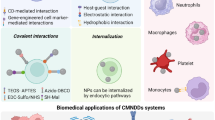Abstract
The advent of modern MRI scanners and computer equipment permits the rapid sequential collection of images of gadolinium chelate (Gd) transit through the kidney. The excellent spatial and temporal (0.9 s) resolution permits analyzing the shape of the recovered curves with a sophisticated model that includes both space and time. The purpose of this manuscript is to present such a mathematical model. By building into the model significant physical processes that contribute to the shape of the measured curve, quantitative values can be assigned to important parameters.
In this work, quantitative values are determined for blood dispersion through the cardio-pulmonary system, systemic clearance rate of Gd, blood flow into each kidney, blood transit time in each kidney, the extraction rate of Gd across the capillary membrane, interstitial distribution volume, and the GFR for each kidney.







Similar content being viewed by others
References
Holechek MJ (2003) Glomerular filtration: an overview. Nephrol Nurs J 30:285–290; quiz 291–292
McDaniel BB, Jones RA, Scherz H et al (2005) Dynamic contrast-enhanced MR urography in the evaluation of pediatric hydronephrosis: part 2, anatomic and functional assessment of uteropelvic junction obstruction. AJR 185:1608–1614
Jones RA, Easley K, Little SB et al (2005) Dynamic contrast-enhanced MR urography in the evaluation of pediatric hydronephrosis: part 1, functional assessment. AJR 185:1598–1607
Huang AJ, Lee VS, Rusinek H (2004) Functional renal MR imaging. Magn Reson Imaging Clin N Am 12:469–486, vi
Lee VS, Rusinek H, Noz ME et al (2003) Dynamic three-dimensional MR renography for the measurement of single kidney function: initial experience. Radiology 227:289–294
Niendorf ER, Grist TM, Frayne R et al (1997) Rapid measurement of Gd-DTPA extraction fraction in a dialysis system using echo-planar imaging. Med Phys 24:1907–1913
Hackstein N, Heckrodt J, Rau WS (2003) Measurement of single-kidney glomerular filtration rate using a contrast-enhanced dynamic gradient-echo sequence and the Rutland-Patlak plot technique. J Magn Reson Imaging 18:714–725
Hackstein N, Kooijman H, Tomaselli S et al (2005) Glomerular filtration rate measured using the Patlak plot technique and contrast-enhanced dynamic MRI with different amounts of Gd-DTPA. J Magn Reson Imaging 22:406–414
Park JB, Santos JM, Hargreaves BA et al (2005) Rapid measurement of renal artery blood flow with ungated spiral phase-contrast MRI. J Magn Reson Imaging 21:590–595
Bax L, Bakker CJ, Klein WM et al (2005) Renal blood flow measurements with use of phase-contrast magnetic resonance imaging: normal values and reproducibility. J Vasc Interv Radiol 16:807–814
Thompson RB, McVeigh ER (2004) Flow-gated phase-contrast MRI using radial acquisitions. Magn Reson Med 52:598–604
de Haan MW, van Engelshoven JM, Houben AJ et al (2003) Phase-contrast magnetic resonance flow quantification in renal arteries: comparison with 133Xenon washout measurements. Hypertension 41:114–118
Thompson HK Jr, Starmer CF, Whalen RE et al (1964) Indicator transit time considered as a gamma variate. Circ Res 14:502–515
Harpen MD, Lecklitner ML (1984) Derivation of gamma variate indicator dilution function from simple convective dispersion model of blood flow. Med Phys 11:690–692
Press W, Flannery B, Teukolsky S et al (1988) Numerical recipes in C. The art of scientific computing. Cambridge University Press, New York
Patlak CS, Blasberg RG (1985) Graphical evaluation of blood-to-brain transfer constant from multiple-time uptake data. Generalizations. J Cereb Blood Flow Metab 5:584–590
Patlak CS, Blasberg RG, Fenstermacher JD (1983) Graphical evaluation of blood-to-brain transfer constants from multiple-time uptake data. J Cereb Blood Flow Metab 3:1–7
Author information
Authors and Affiliations
Corresponding author
Additional information
The author has no financial interests, investigational or “off-label” uses to disclose
Rights and permissions
About this article
Cite this article
Votaw, J.R., Martin, D. Modeling systemic and renal gadolinium chelate transport with MRI. Pediatr Radiol 38 (Suppl 1), 28–34 (2008). https://doi.org/10.1007/s00247-007-0588-9
Received:
Accepted:
Published:
Issue Date:
DOI: https://doi.org/10.1007/s00247-007-0588-9




